Subtotal: £5,797.33
Shipping costs can be calculated in the Basket or during Checkout
Login
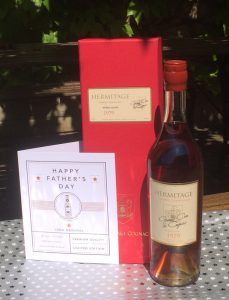 It only comes around once a year so Father’s Day is the perfect occasion to say “Thanks Dad” and spoil him with something really special. We have a vast range of the very best vintage brandies from which you can choose. Each one shows how much you care.
It only comes around once a year so Father’s Day is the perfect occasion to say “Thanks Dad” and spoil him with something really special. We have a vast range of the very best vintage brandies from which you can choose. Each one shows how much you care.
To make your choice a little easier we have selected three to offer at a reduced price during June 2017. Each will be the perfect gift on Sunday 18th June so take a look now.
Our selection comprises a delicate yet complex, rare, vintage cognac from 1979; a fruity, well-balanced armagnac distilled for 15 years and a rich, robust, dark 20 year old cognac perfect for drinking with coffee.
We send our parcels out on a 24 hour service so you can order up until noon on Friday 16th June 2017. Our special offers are only available while stocks last. If one of them is the perfect gift for Dad this Father’s Day, buy now to avoid disappointment.
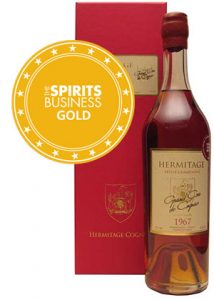 We are delighted to announce that in the 2017 Cognac Masters our two single vintage cognacs both won Gold Medals.
We are delighted to announce that in the 2017 Cognac Masters our two single vintage cognacs both won Gold Medals.
Hermitage 1967 Petite Champagne Cognac is complex with many charming qualities. Mature, yet youthful and light, it is a little bit of Hermitage bliss.
Hermitage 1987 Grande Champagne Cognac is also wonderfully complex with flavours of wild fruits and roasted nuts, enhanced by its slightly higher strength of 47% abv.
A limited number of each are on offer during the month of May 2017 so, if you want to try award-winning cognacs that are fabulously different, now’s your chance. And if you’ve got a big birthday or anniversary coming up, they are ideal for 30th or 50th celebrations too.
During the war years the Cognaçais were required to provide the Germans with large quantities of brandy. They cheated of course by shipping spirits made from root vegetables thus maintaining their stocks of real cognac. It was during this period that Maurice Hennessy and a well known grower, Pierre Verneuil, followed the example of the growers in the Champagne 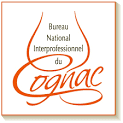 region and created the wine and eaux-de-vie distribution bureau to preserve the cognac stock. When the war ended this organisation emerged as the Bureau National Interprofessionnel du Cognac (BNIC), cognac’s governing body. Composed equally of growers and merchants, the BNIC acquired a great deal of de facto independence from the government in the formulation and supervision of the rules governing
region and created the wine and eaux-de-vie distribution bureau to preserve the cognac stock. When the war ended this organisation emerged as the Bureau National Interprofessionnel du Cognac (BNIC), cognac’s governing body. Composed equally of growers and merchants, the BNIC acquired a great deal of de facto independence from the government in the formulation and supervision of the rules governing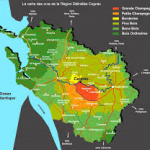 cognac. The BNIC also took over the role, previously performed by Martell and Hennessy, of deciding the price of new brandies from various crus. The cognac region had been divided into crus in the 1930s as a natural consequence of the Appellation d’Origine Contrôlée system which had become law in 1905.
cognac. The BNIC also took over the role, previously performed by Martell and Hennessy, of deciding the price of new brandies from various crus. The cognac region had been divided into crus in the 1930s as a natural consequence of the Appellation d’Origine Contrôlée system which had become law in 1905.
The end of World War 2 also ushered in nearly 30 years of increasing prosperity. The BNIC greatly improved the relationship between growers and merchants and was lubricated by the ensuing prosperity. In 1948 the Station Viticole, a private laboratory set up to help growers and distillers after the Phylloxera outbreak, was taken over by the BNIC who were able to control all the stages involved in the production of cognac. This included the regulations required to manage the growing, wine making, distillation and ageing of cognac. More recently their powers have gone further with the control of market and sales information, both country by country and by product type, enabling them to manage government taxes and duties. In short, the BNIC now manages every stage of cognac production, from the vineyards to the end buyer.
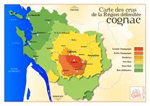 The 31st of March in the Cognac region (also known as The Charente) is the last day in the year when cognacs may be distilled from the wines produced from the previous grape harvest. Most will have been distilled in the last part of 2016 but larger vineyards will have continued distilling through to this year. On the 1st of April, all the cognacs from the 2016 harvest will move from age ‘compte 00’ to ‘compte 0’. In one year’s time, they will become ‘compte 1’ and a year after that ‘compte 2’ etc.. The 2016 harvest was good and both quality and quantity are said to be above expectations – always music to our ears. However, most of it will be purchased by the big houses, probably in about a year’s time. Market demand for VS and VSOP is such that it will be blended along with thousands of others and probably sold around 2020.
The 31st of March in the Cognac region (also known as The Charente) is the last day in the year when cognacs may be distilled from the wines produced from the previous grape harvest. Most will have been distilled in the last part of 2016 but larger vineyards will have continued distilling through to this year. On the 1st of April, all the cognacs from the 2016 harvest will move from age ‘compte 00’ to ‘compte 0’. In one year’s time, they will become ‘compte 1’ and a year after that ‘compte 2’ etc.. The 2016 harvest was good and both quality and quantity are said to be above expectations – always music to our ears. However, most of it will be purchased by the big houses, probably in about a year’s time. Market demand for VS and VSOP is such that it will be blended along with thousands of others and probably sold around 2020.
The Cesium Thought Leadership (CTL) panel met recently to discuss the role industry bodies play in shaping the drinks industry. They concluded that these bodies have 4 areas of influence: education, interdependency, unified thinking and lobbying. The regulatory body for cognac is  the Bureau National Interprofessionnel du Cognac (BNIC) whose mission is ‘to develop and promote cognac, representing the best interests of all cognac professionals including growers, merchants and members of other activities related to the cognac trade’. They control all stages of cognac production including the regulations required to manage the growing, wine making, distillation and ageing. Over the years their powers have increased and they now control market and sales information (both country by country and by product type) enabling them to manage government taxes and duties. In short, the BNIC manages every stage of cognac, from the vineyards to the end buyer and certainly covers the 4 areas of influence recognised by the CTL. This level of control definitely protects the industry from rogue trading but has also been criticised for stifling innovation. We wait to hear what the BNIC thinks about ‘Adding a Finish’ as suggested by Martell (see previously) – will others dare to follow?
the Bureau National Interprofessionnel du Cognac (BNIC) whose mission is ‘to develop and promote cognac, representing the best interests of all cognac professionals including growers, merchants and members of other activities related to the cognac trade’. They control all stages of cognac production including the regulations required to manage the growing, wine making, distillation and ageing. Over the years their powers have increased and they now control market and sales information (both country by country and by product type) enabling them to manage government taxes and duties. In short, the BNIC manages every stage of cognac, from the vineyards to the end buyer and certainly covers the 4 areas of influence recognised by the CTL. This level of control definitely protects the industry from rogue trading but has also been criticised for stifling innovation. We wait to hear what the BNIC thinks about ‘Adding a Finish’ as suggested by Martell (see previously) – will others dare to follow?
Read more about the BNIC on our Brandy Education page.
An EU Commission report has been welcomed by the drinks industry as, 2 years after MEPs voted for compulsory calorie labelling on alcoholic drinks, they have called upon the drinks trade to present a self-regulatory solution. Within 12 months calorie and nutritional information must be available to alcohol consumers – a ruling that came into effect for all other food and 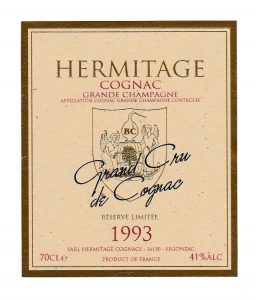 beverages in 2011. Will cognac labelling have to change? Aware that label space is an issue, the WSTA is suggesting that hosting the information on-line rather than on-pack will be the most effective solution. It has offered alcohol calorie information on its website for the past 2 years. Nutritional information will perhaps be more of a challenge – should it include the ingredients that go into the production of the spirit or just the elements that can be identified in the bottle prior to sale? For small craft cognac producers, this will be an onerous task as each individual vintage or batch will have to be tested. For the big cognac houses, who produce masses of one blend, the task is relatively straight forward. However, they will no longer be able to hide from consumers the number and quantity of additives such as sugar syrup and caramel that are present.
beverages in 2011. Will cognac labelling have to change? Aware that label space is an issue, the WSTA is suggesting that hosting the information on-line rather than on-pack will be the most effective solution. It has offered alcohol calorie information on its website for the past 2 years. Nutritional information will perhaps be more of a challenge – should it include the ingredients that go into the production of the spirit or just the elements that can be identified in the bottle prior to sale? For small craft cognac producers, this will be an onerous task as each individual vintage or batch will have to be tested. For the big cognac houses, who produce masses of one blend, the task is relatively straight forward. However, they will no longer be able to hide from consumers the number and quantity of additives such as sugar syrup and caramel that are present.
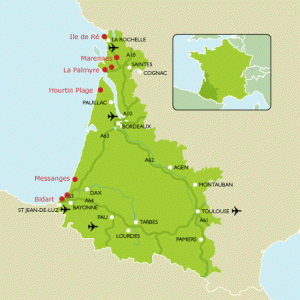 David McAninch has written this highly entertaining book about Gascony – “France’s Last Best Place” after an 8 month stay in the region. With interesting quotes such as “the quantity of armagnac produced in any given year is equivalent to the angel’s share—the volume of spirit lost to evaporation—of a year’s production of cognac” and “armagnac is to cognac what the Rolling Stones were to the Beatles” it makes fascinating reading for all fans of the amber nectar. Originally sent to research a story about a duck, his love of the local inhabitants and duck-rich cuisine led him to realise what he and so many other tourists had been missing. Take a look at our vast range of vintage armagnacs and bring a piece of Gascony to your home.
David McAninch has written this highly entertaining book about Gascony – “France’s Last Best Place” after an 8 month stay in the region. With interesting quotes such as “the quantity of armagnac produced in any given year is equivalent to the angel’s share—the volume of spirit lost to evaporation—of a year’s production of cognac” and “armagnac is to cognac what the Rolling Stones were to the Beatles” it makes fascinating reading for all fans of the amber nectar. Originally sent to research a story about a duck, his love of the local inhabitants and duck-rich cuisine led him to realise what he and so many other tourists had been missing. Take a look at our vast range of vintage armagnacs and bring a piece of Gascony to your home.
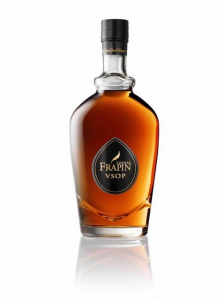 Frapin has released its VSOP in a new decanter – taller and narrower than the original, it has different detailing on the neck and stopper. One could argue that it looks more like a bottle than a decanter. Frapin is the largest single estate in Grande Champagne (240 hectares) with a family history dating back to 1270. They are known for producing fruity, balanced cognacs but without age statements. A VSOP only has to be aged for 4 years – quite young for the price tag of £55. Compare this with our new VSOP arrival which has been aged for 8 years – Jean Fillioux La Pouyade – retailing at just £46.51. For presentation though you cannot beat our extremely elegant carafes containing Hermitage 20 and 25 year old Grande Champagne Cognac.
Frapin has released its VSOP in a new decanter – taller and narrower than the original, it has different detailing on the neck and stopper. One could argue that it looks more like a bottle than a decanter. Frapin is the largest single estate in Grande Champagne (240 hectares) with a family history dating back to 1270. They are known for producing fruity, balanced cognacs but without age statements. A VSOP only has to be aged for 4 years – quite young for the price tag of £55. Compare this with our new VSOP arrival which has been aged for 8 years – Jean Fillioux La Pouyade – retailing at just £46.51. For presentation though you cannot beat our extremely elegant carafes containing Hermitage 20 and 25 year old Grande Champagne Cognac.
 One of the 4 key spirit trends for 2017 is Cognac, according to The Drinks Business. Its resurgence in China and the US was the story of last year and this year it is forecast to ‘continue shaking off complacency while creating the template for urgently needed further geographic diversification’. One potential new market is India where historically they enjoy brandy in the south and whisky in the north. In the last few years, the luxury market in India has been growing at a compounded annual growth rate of approximately 25%, reaching about $18 billion in 2016. The country has many active wines and spirits clubs and there is an appreciation of brands with true heritage. The brand ambassador for Remy Martin has been investigating the Indian market. He comments that globally, Millienials are looking for rich, authentic spirits with a story behind them. Cognac in India is beginning to appeal so let’s hope that Remy are knocking on the right door.
One of the 4 key spirit trends for 2017 is Cognac, according to The Drinks Business. Its resurgence in China and the US was the story of last year and this year it is forecast to ‘continue shaking off complacency while creating the template for urgently needed further geographic diversification’. One potential new market is India where historically they enjoy brandy in the south and whisky in the north. In the last few years, the luxury market in India has been growing at a compounded annual growth rate of approximately 25%, reaching about $18 billion in 2016. The country has many active wines and spirits clubs and there is an appreciation of brands with true heritage. The brand ambassador for Remy Martin has been investigating the Indian market. He comments that globally, Millienials are looking for rich, authentic spirits with a story behind them. Cognac in India is beginning to appeal so let’s hope that Remy are knocking on the right door.
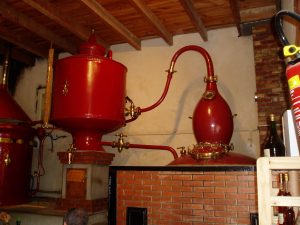 David has been in France again looking for more wonderful cognacs to add to the Hermitage Vintage Cognac stable. The latest introduction is a fabulous 30 Year Old Grande Champagne Cognac with rich nut, spice and coffee flavours.
David has been in France again looking for more wonderful cognacs to add to the Hermitage Vintage Cognac stable. The latest introduction is a fabulous 30 Year Old Grande Champagne Cognac with rich nut, spice and coffee flavours.
He also sourced a superb 1987 vintage which was distilled 30 years ago and is now released at the slightly higher strength of 47%. Retailing at about £130 it compares very favourably to the recently released Hine 1987 which has an RRP of £245. Both were produced when a very cold winter was followed by a wet spring and scorching summer – perfect conditions for producing great vintage cognac. Our latest Hermitage Cognacs were produced on a narrow, straight-sided still head which minimises rectification and maximises flavour.